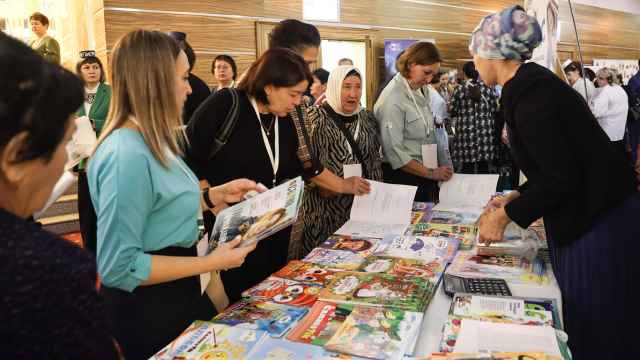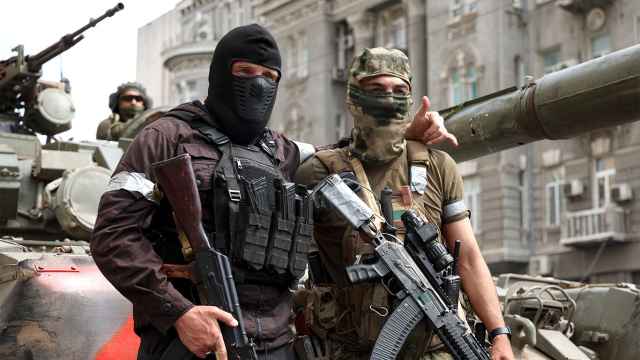Since its invasion of Ukraine, maps depicting the collapse of Russia by 2025 have proliferated online. These fantastical graphics carve the country up into dozens of independent republics.
The maps betray a delusion on the part of their authors that is common to many political forecasters. These observers—all map fetishists—mistake the administrative boundaries of Russia’s provinces for real borders of socioeconomic life, unaware that the true divisions in Russian society almost never coincide with the arbitrary lines drawn by Communist Party functionaries in the first half of the last century. Russia is extremely unlikely to disintegrate along its regional borders for geographical, sociological, economic, and political-administrative reasons.
Geographically, the borders of Russia’s regions and republics are essentially abstract, having been repeatedly redrawn between the 1920s and the 1940s. The resulting sinuous lines make as much social and geographical sense as the rectilinear ones for which the United States is so famous. Still, they can give the false impression of large national autonomies, belying, for example, that the Republic of Karelia is made up of 82 percent ethnic Russians and just 7 percent ethnic Karelians. In fact, of the republic’s seventeen districts, only three are home to Karelians.
The ethnolinguistic maps of Bashkortostan, which is almost equally divided between Bashkirs, Russians, and Tatars, as well as of Dagestan, which boasts more than a dozen indigenous peoples, resemble patchwork quilts. This is by design: in the Stalin years, ethnic autonomies were largely demarcated in such a way to complicate attempts at self-determination and ensure that Moscow would be called upon to arbitrate local territorial disputes.
Sociologically, most of Russia’s regions share the same basic values and attitudes. In 2018 and 2020, Moscow State University researchers discovered that predominantly Russophone provinces did not have statistically significant differences when it came to how they felt about power distance (the extent to which people are accepting of formal hierarchy and inequality), uncertainty avoidance, individualism versus collectivism, and long-term versus short-term normative orientation. Neither geography nor socioeconomic development made a difference.
For example, the geographically remote yet resource-rich Krasnoyarsk region, with its above-average wages, holds more or less the same values as the relatively poor Novgorod region in the northwest; the Kaluga, Nizhny Novgorod, and Ulyanovsk regions in central Russia; and Rostov region in the south. Yet it differs in several respects from the geographically and demographically similar Sakha Republic (Yakutia), such as in relation to power distance and individualism versus collectivism.
Power distance is a key measure in such studies. This, along with individualism, happens to be much lower in the republics of Buryatia, Tatarstan, and Yakutia than in Russian-speaking regions, thanks in part to the prevalence of clan structures. Here, informal kinship ties offset if not insulate one from subordination to formal hierarchy, with the result that even poor provincials feel involved in local self-government, albeit through traditional kinship networks rather than formal democratic institutions, which are equally weak across Russia.
The outbreak of war has sooner closed the values gap between Russia’s provinces than widened it, boding ill for those with separatist aspirations. Mobilization has been more acutely felt in less Russophone parts of the country, where the median age tends to be lower, potentially causing trust in local informal institutions—hitherto a source of security—to decline, and power distance and individualism to rise.
Economically, geography again matters little. In most of Russia’s regions, cities of more than a million people boast a diversified economy while surrounded by tens of monotowns: small cities reliant on a single industry. How rapidly the slow economic crisis afflicting Russia will unfold across the country’s provinces depends on what sectors are locally dominant, not geographical location or the balance of power between local elites. A key factor will be to what extent these critical sectors have been nationalized, that is, are subject to state intervention—the defense industry being a leading example.
Russia’s economic woes will create variation not between regions but within them, such as between the public and private sectors, of which the former is far more likely to receive adequate government support. With tensions playing out internally rather than between different parts of the country, there is little reason to expect the development of a strong sense of provincial consciousness.
Following the invasion of Ukraine, the excess profits made from energy exports in the first half of 2022 went far in reducing economic inequality between Russia’s provinces, as the federal authorities not only invested in strategic sectors but also extended assistance to the population. This ranged from new defense orders and support for large businesses in ailing industries to direct subsidies, including for the impoverished and relatives of those mobilized.
Yet in the background, tectonic shifts were under way. If in 2022 Russia’s oil-rich regions enjoyed vast resources thanks to high global oil prices and the delayed effects of Western sanctions, already in early 2023 new difficulties were coming into view. Today, provinces involved in the export of oil and gas to Europe—like those along the Volga River and in Western Siberia—are set for reduced production and processing and, more important, reduced fixed capital investment.
Large oil and gas companies had long been key contributors to not only the federal budget but also regional and municipal ones. For example, Tatarstan owed much of its economic self-sufficiency to the success of Tatneft. Subfederal finances are now feeling the pinch, and consequently provinces are losing what remained of their economic sovereignty, with the result that Tatarstan will increasingly resemble other industrial provinces dependent on federal largesse.
The implication, then, is that the main economic dividing line in Russia could end up running between the public sector and those private capital-heavy industries hit hard by sanctions, as opposed to along the borders of the country’s regions. Tellingly, even as Russia’s GDP has shrunk by 4 percent, several of its provinces continue to grow economically: most of them poor regions that are net recipients of state support such as Tuva and Chechnya.
The region with the highest growth—a rate of more than 5 percent—is Kurgan, which happens to be the poorest and most federal largesse–dependent in the Ural Federal District. The reason is the defense enterprise Kurganmashzavod, whose presence in this historically depressed region also helps explain why unemployment has fallen to 0.9 percent amid labor shortages in the defense industry. Specialists are moving here from monotowns in the neighboring Chelyabinsk region, which was once significantly better off but has suffered greatly from the decline of metallurgy.
In doling out this funding, Moscow has only deepened the regions’ economic dependence on the central authorities. Of course, the country’s economic centralization did not happen overnight, being one of the key developments of the past twenty years. Yet it is worth noting that this process saw standardized rules put in place for all provinces, irrespective of status, the political effect of which was to bring into line local elites across Russia.
Nowhere is their subordination more evident than in the technocratization of the country’s governors, who since Sergei Kiriyenko’s appointment as the Kremlin’s deputy chief of staff in 2016 have looked more and more alike, from their surnames to their faces to their biographies. The selection of governors has become personnel policy rather than public politics, with local clans gradually deprived of input, even in the most autonomous of republics, such as Tatarstan, Bashkortostan, and Yakutia.
By 2022, every region’s executive branch was reliably dedicated to meeting targets set by the Kremlin’s domestic politics directorate. The same happened at the municipal level, as mayoral elections were effectively canceled in favor of the appointment of figures approved not by local bosses but by the Kremlin.
The events of last year tested this system, not long after the pandemic had, forcing regional administrations to deal with the economic challenges facing key industries and meet the Defense Ministry’s mobilization targets while also reassuring the Kremlin of their loyalty and increasing coordination with the security services. At the same time, the regional authorities came under pressure from the population, becoming a front office for the federal government.
Spurred by mobilization, new changes to Russia’s social contract mean more responsibilities for the regional and municipal authorities in particular. After all, they are closest to the people, and the distance between them is ever shrinking as socioeconomic problems mount and members of the public increasingly turn to their mayors and governors rather than the Kremlin for assistance and reassurance.
Set as it may be to define the regional and municipal agenda in 2023, this process is nonetheless unlikely to fuel separatism in the regions. Even amid the tensions unleashed by mobilization, the radicalization of politics and the regime, and the unequal allocation of state resources, there is simply no national question on the table, and no talk of regional federalism—and no indication that this will change.
This article was originally published by the Carnegie Endowment for International Peace.
A Message from The Moscow Times:
Dear readers,
We are facing unprecedented challenges. Russia's Prosecutor General's Office has designated The Moscow Times as an "undesirable" organization, criminalizing our work and putting our staff at risk of prosecution. This follows our earlier unjust labeling as a "foreign agent."
These actions are direct attempts to silence independent journalism in Russia. The authorities claim our work "discredits the decisions of the Russian leadership." We see things differently: we strive to provide accurate, unbiased reporting on Russia.
We, the journalists of The Moscow Times, refuse to be silenced. But to continue our work, we need your help.
Your support, no matter how small, makes a world of difference. If you can, please support us monthly starting from just $2. It's quick to set up, and every contribution makes a significant impact.
By supporting The Moscow Times, you're defending open, independent journalism in the face of repression. Thank you for standing with us.
Remind me later.








